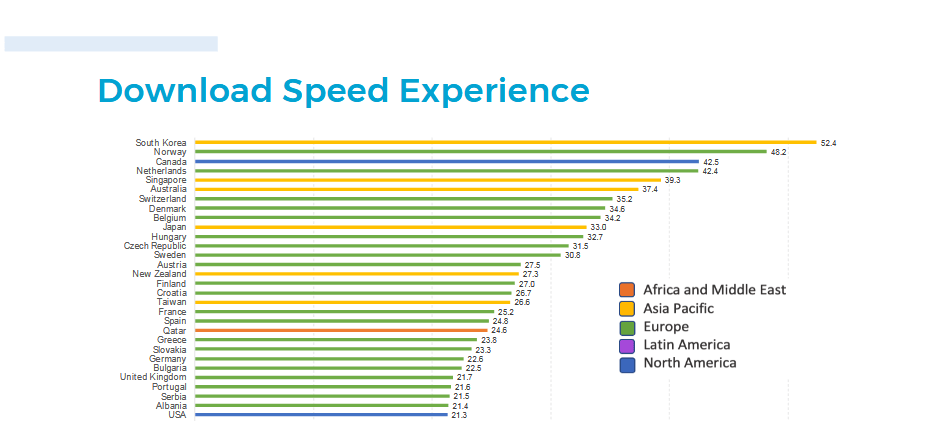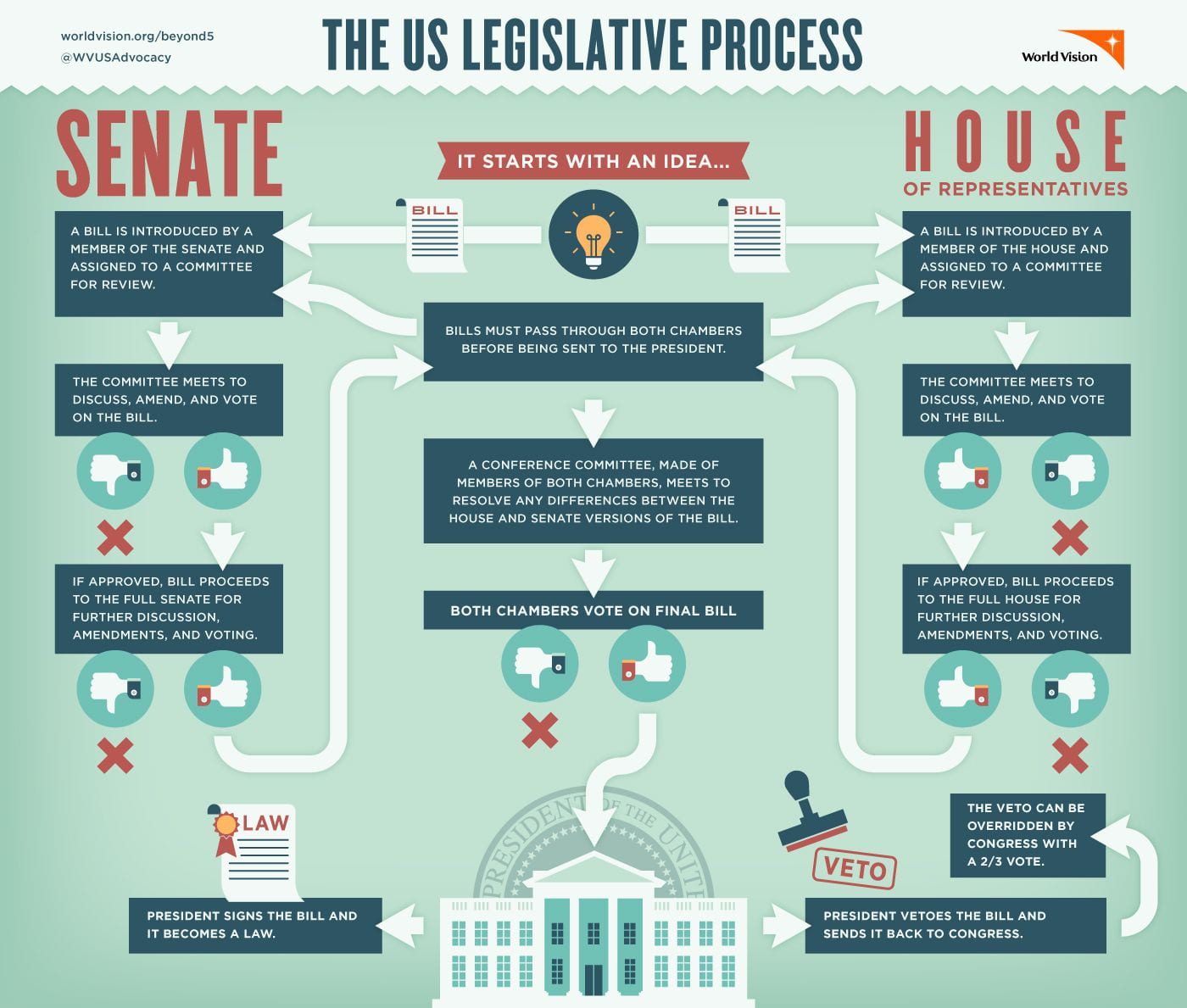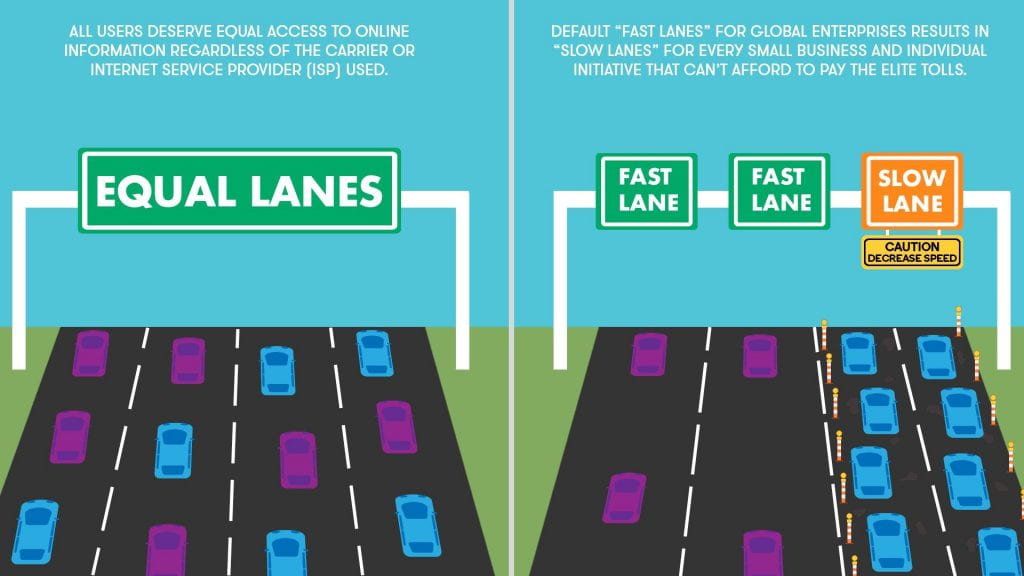https://sites.google.com/view/net-neut-2-internet-equality/net-neutrality
Author: bninh
Internet in a perfect world
Introduction
The ideal system of internet isn’t easily obtained even if we re-institute net neutrality. The challenges brought up to improve broadband as a whole would take more effort and resources to complete. In order to achieve the best internet speeds in the world, we’d need to understand how other countries achieved higher internet speeds and how the United States needs to implement strategies from other countries and other innovations to improve our own connection speeds.
Paragraph 1

(Akamai)
This graphic shows the average internet speeds of the countries with the highest speeds as of 2017. The United States is located at number 10 with 18.7 megabytes per second, and South Korea having the fastest internet by more than 10 megabytes per second compared to the United States. The United States overall has one of the better connections of most of the world, being in the top 10, but these speeds have not aged comparatively well when looking at mobile download speeds.
A study done in 2019 done on mobile data downloads shows the United States is lacking behind many European and Asian countries in terms of internet speeds, even dropping in download speeds to Countries that don’t appear in the previous list. If we were to assume the speeds of these mobile downloads were relative to internet speeds, South Korea has almost doubled in mbps, while the U.S. has barely increased by 4.6 mbps. This shows that the U.S. currently isn’t focusing on improving internet speeds, or rather the internet service providers aren’t seeking to improve it. In South Korea, ISPs are working in tandem with the Korean government to invest in fast, affordable internet through laws and government money (publicknowledge). This does come with the added drawback of more government control, as these laws give the government more control over the broadband market, but having three broadband companies be the only relevant competition for Korean consumers gives the consumers a choice on what service to pay for. The consumers are protected by the Korean government to prevent these businesses from overcharging, and these businesses only have to compete against the other two on who provides the best service. The U.S. lacks this government control over their own ISPs, rather the ISPs have influence over the government. The most egregious example of the ISPs having influence over the government being the removal of net neutrality. If the United States want to have the better overall internet speeds, the government needs to start implementing laws that either remove private internet providers and have a government internet provider, or work together with these internet providers into creating a network that replicates Korean internet, a widely public service available at cheap prices. But like the South Korean government having to invest 5 billion dollars into building the infrastructure to improve broadband, the United States would need to put a lot of money into installing fast internet.
Paragraph 2
The biggest hurdle to improving the speed of the United States is that of the entire region. The United States is a bigger landmass than South Korea, having enough landmass to fit all of the countries listed in the first graphic inside of the United States.

This doesn’t help that if we wanted the best connection possible throughout the U.S., the best solution is to use fiber-optic wires, which are expensive to install and repair (broadbandnow). The problem with installing fiber wire throughout the United States is that there isn’t enough of an incentive to do so. The U.S. population is unevenly dispersed, with cities containing more people than entire states. It isn’t realistic to run fiber everywhere as there is a need to also maintain maintenance for these wires to continue to function. The solution to give reliable internet to a broad area would be to invest in satellite broadband. Private company Spacex is planning to install 30,000 satellites into orbit. These satellites form the Starlink broadband, which will provide consumers with broadband internet from low orbit (geekwire). Instead of having wires that would have to be installed and repaired over time, satellite connections provide a relatively cheaper solution, being able to cover a wide area at 340-710 miles above the Earth. Spread the distance to 30,000 satellites, and having great service wherever you are in the country can be a possibility in the near future. There are some problems with this plan, being that these satellites will cover the night sky in exchange for relatively great internet speeds, but announcements from Spacex plans to improve the satellites over the course of development. This solution towards broadband connection is relatively innovative than the method of installing fiber throughout the U.S., but it could be improved upon if the U.S. government chooses to invest towards improving internet speeds and the businesses of broadband. We can effectively see a technological shift solely responsible for satellite broadband, and because internet would be widely available, the access to information would be sent faster than ever before. We just need the government to capitalize on the resources available.
Conclusion
The realistic solution to improve internet is to gradually implement new strategies that will affect the United States as a whole, starting with the re-institution of net neutrality. Having more government control over the businesses of ISPs will allow for the government to properly instate real solutions to improve internet. After having some sort of control over ISPs, the U.S. government and ISPs need to create a plan that will provide the public cheap internet that everyone can use regardless of where they are at. If these changes are ever made, we will eventually begin to see improvements to not only the internet, but the entire culture of the United States.
Net Neutrality: Why hasn’t our government sought to return it?
The greatest influence that can reintroduce net neutrality across the United States would be that of the House of Congress, but the amount of effort to convince either the house of representatives or the senate that reinstating net neutrality is a huge hurdle considering the small amount of interest. With the lack of concern towards net neutrality outside of interest groups, there wouldn’t be enough votes needed to pass through both the House and the Senate.

Above is the process of how a bill is passed through congress, having to go through both the House of Representatives and the Senate before having the president signing it to law, with the respected committees reviewing the bill before it reaches either floor. The long and arduous task of passing a bill through both the house and senate is the key reason to why the Save the Internet Act of 2019 is having a difficult time going through congress. (https://www.vox.com/2019/4/10/18302186/net-neutrality-house-bill-senate) The Save the Internet Act of 2019 is the bill circulating through congress that will reinstate net neutrality as a law Though it did pass through the House, the Senate will not agree to pass due to its majority, that being the Republican party, being against the idea of reinstating net neutrality. This doesn’t even account for the ability to filibuster in the senate, which would drag the issue to a longer period of time while in periods of disagreements . ” …a senator who launches a filibuster virtually hijacks the floor of the chamber by speaking for long periods of time, thus preventing the Senate from closing debate and acting on a bill. “(American Government 2e Chapter 11.5) As filibustering continues to occur in the senate, the more unlikely the bill will reach the senate before the next presidency, making it be in a limbo state. And if the senate rejects the bill, without the two sides of congress agreeing to pass the bill, it won’t go into effect and will die, ruining the chances of bringing back net neutrality through congress.
In our group’s concept map, we discuss some of the particular interest groups, the most prominent towards this topic would be the broadband companies in favor of abolishing net neutrality.”…companies like Verizon and AT&T will lobby Congress for laws beneficial to their businesses…” (American Government 2e Chapter 10.3) Broadband companies are lobbying to keep the removal of net neutrality, and those against it would need to be under the Democratic party due to the party divide that the Democrats and Republicans have.This is evident in the previous article talking about how the Save the Internet Act of 2019 was passed in the House, but will be prevented to pass through the Senate. With a majority of the Senate being Republican and the majority of the House being Democrat, the political divide is another key reason to why net neutrality will not pass. The divide in congress is solely caused by the influence of the broadband companies, as they continue to lobby the republican senate to continue to control the speed of the internet as they please.
With the House of Congress being able to make laws, they would have the greatest influence into implementing net neutrality, the only downside would be the long process in approving a law, having to be accepted in both the House and Senate, and the lobbyists against net neutrality funding the political party of the majority of the Senate and the president himself, which in turn means that they’re more likely to reject the reinstitution of net neutrality.
What is Net neutrality, and why is it important?
The point of this blog is to inform readers of net neutrality, and the situation the internet is currently in. This is to give more information surrounding the people in favor of repeal and why this topic is important to the public, as the information about this topic has been misunderstood.

Net neutrality is the idea of the internet being a service that does not discriminate, being available to access to anyone without the interference of arbitrary latency (https://www.publicknowledge.org/issues/net-neutrality/). This concept of how the internet should work has been the normality for quite a bit of time, but broadband companies in the United States have pushed the Federal Communication Commission into deciding to repeal net neutrality. If their plans go into effect, the internet as we know it would change drastically to account for the demands necessary to stay relevant, and the public’s access towards the internet would change. As stated earlier, the traffic of internet latency would be directly influenced by service providers, but in addition to controlling internet latency, the websites you can go through can be directly influenced due to this control. Internet service providers can effectively charge for how you want to stream the internet, blocking certain websites if the website wasn’t bought together in a bundle, similar to how cable television can sell certain television shows and block other shows because it wasn’t included in the plan (https://www.wired.com/2017/02/fcc-oks-streaming-free-net-neutrality-will-pay/). However, this system wouldn’t work to the internet, as the smaller independent websites lack the freedom to participate in this system, killing competition and eventually leading to a lack of content control of these potential monopoly websites.
Ajit Pai, Chairman of the FCC
The potential repeal of net neutrality has always been a problem to internet users since the access to the internet became available to the public but, with the introduction of Ajit Pai, the current chairman of the FCC, the influences of big broadband companies such as AT&T, Comcast, and Verizon have actively pushed towards repealing net neutrality more actively in 2017. Ajit Pai became a notable person in favor of repealing net neutrality most likely for his former position in Verizon as a Associate General Counsel, but becoming the chairman of the FCC gave him a high position of power in the government that would directly influence media outlets, and in our case, the internet. With Ajit also being a republican in a republican dominated house and senate, it was a unanimous decision that could only be influenced by the voters demanding that their representatives vote to keep net neutrality, but the decision would ultimately be final, as the vote to repeal net neutrality was made in December 14, 2017.
Though the United States has repealed net neutrality, the possibility of returning net neutrality is a possibility. (https://www.vox.com/2019/4/10/18302186/net-neutrality-house-bill-senate) The save the internet act was passed into the senate back in April, showing a demand to bring back net neutrality. The downside to this act passing the senate is the approval of the president and House of Representatives, both of whom are unlikely to sign the bill into passing. Though, given enough time, this would likely mean that net neutrality could return and remove the repeal of net neutrality.
With the internet being an important source of content in our everyday lives, the repeal of net neutrality could possibly lead to an unstable control of the internet, lacking the competition necessary for a capitalist society to thrive. But without the proper information, the battle for net neutrality would be meaningless, thus combating this lack of understanding helps push the control of these broadband companies back so that one day, net neutrality could return, or if it doesn’t, a compromise that could meet those in favor and against net neutrality.